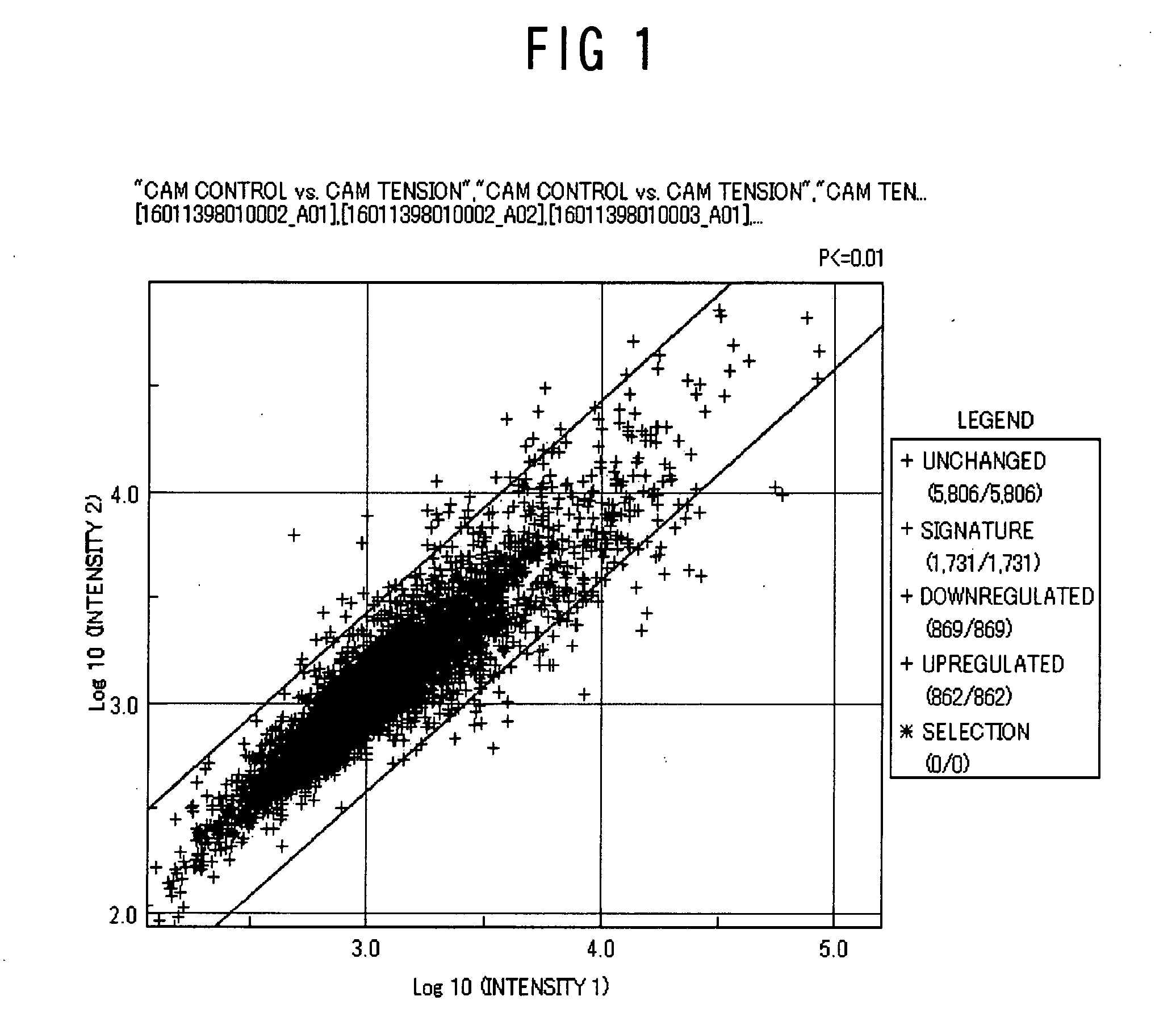Genes controlling plant cell wall formation
a plant cell wall and gene technology, applied in the field of gene control of plant cell wall formation, can solve problems such as lack of natural resources, and achieve the effects of enhancing the supply of high-quality fiber raw materials, promoting cell wall component biosynthesis and and enhancing the biosynthesis of wood fiber cell morphogenesis
- Summary
- Abstract
- Description
- Claims
- Application Information
AI Technical Summary
Benefits of technology
Problems solved by technology
Method used
Image
Examples
example 1
Production of a Eucalyptus EST Database
(1) Extraction of RNA from Eucalyptus
[0087] The thickly grown part of the trunk (secondary wall hypertrophic band; tissue rich in cambium), leaves, and roots, were selected as Eucalyptus tissue for extraction, envisioning gene expression by various circumstances such as tension stress and stress due to exposure to salt solutions. The method described in Hiono, et al. (Japanese Patent Application No. Hei 6-219187) was used as the basic extraction procedure. As an example of this method, the following provides a detailed explanation of the RNA extraction method using Eucalyptus root obtained by a hydroponic cultivation.
[0088] Young Eucalyptus (Eucalyptus camaldulensis) plants grown for two months were transferred to a hydroponics tank. Hydroponic cultivation was carried out using the culture medium of Hoagland-Amon, et al. The composition of the hydroponic culture medium was: 5.0 mM KNO3, 3.0 mM Ca(NO3)2, 2.0 mM NH4H2PO4, 2.0 mM MgSO4, 47 μM ...
example 2
Extraction of Genes Specifically Expressed in Eucalyptus Reaction Wood Tissue
(1) Production of a Eucalyptus Trunk-Specific Oligo Microarray
[0093] A Eucalyptus oligo microarray was produced targeting the entire sequence excluding the overlapping sequences from 0JI001 and 0JI005 according to the Eucalyptus EST database shown in Table 1. Actual production of the microarray was commissioned to Agilent Technologies, Inc. (Japanese representative: Yokogawa Analytical Systems Inc.). Details are described in the following web site: http: / / www.agilent.com / cag / country / JP / products / PCol494.html.
[0094] The Eucalyptus oligo microarray produced in this manner comprised 8400 oligo DNA, and was able to cover a majority of the genes recognized to be expressed in the Eucalyptus trunk.
(2) Extraction of Genes Specifically Expressed in Eucalyptus Reaction Wood Forming Tissue by Microarray Analysis
[0095] The biosynthesis of cellulose (a major component of the cell wall) in broad-leaved trees in par...
PUM
| Property | Measurement | Unit |
|---|---|---|
| angle | aaaaa | aaaaa |
| morphology | aaaaa | aaaaa |
| elongation | aaaaa | aaaaa |
Abstract
Description
Claims
Application Information
 Login to View More
Login to View More - R&D
- Intellectual Property
- Life Sciences
- Materials
- Tech Scout
- Unparalleled Data Quality
- Higher Quality Content
- 60% Fewer Hallucinations
Browse by: Latest US Patents, China's latest patents, Technical Efficacy Thesaurus, Application Domain, Technology Topic, Popular Technical Reports.
© 2025 PatSnap. All rights reserved.Legal|Privacy policy|Modern Slavery Act Transparency Statement|Sitemap|About US| Contact US: help@patsnap.com

